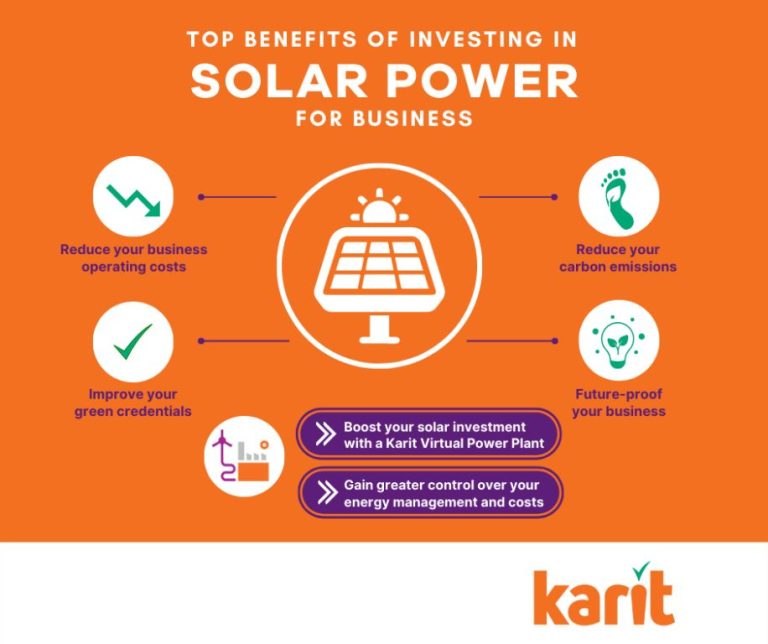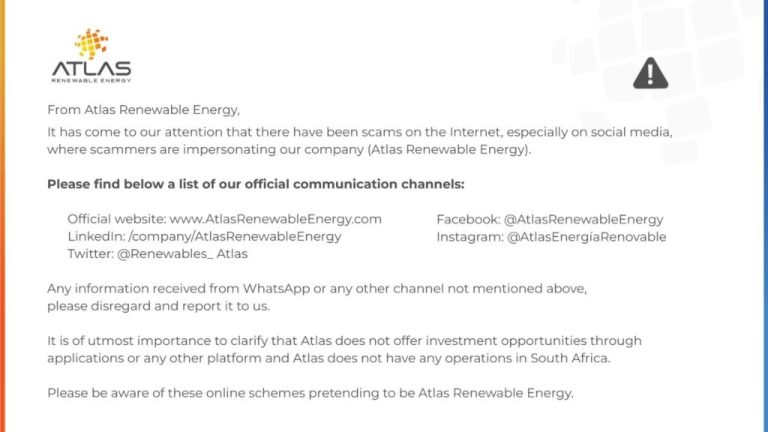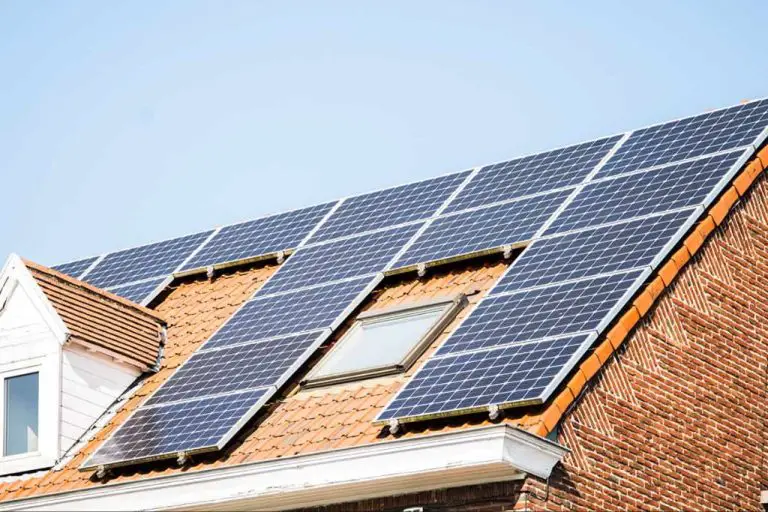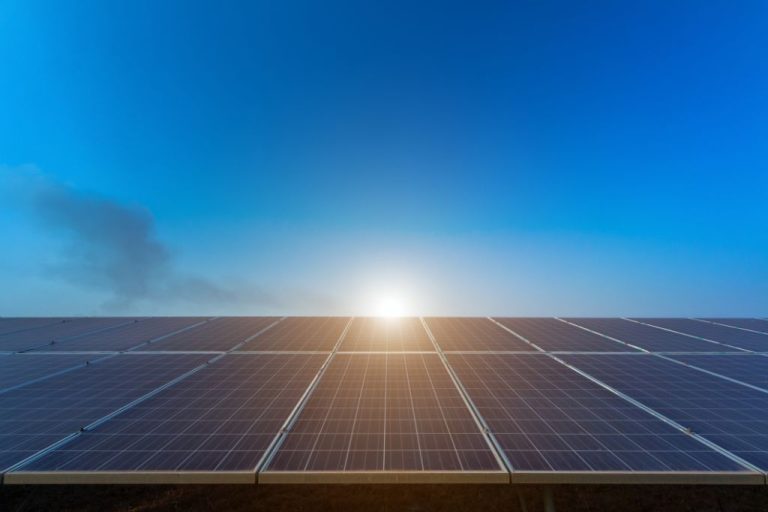Solar Energy Advantages And Disadvantages
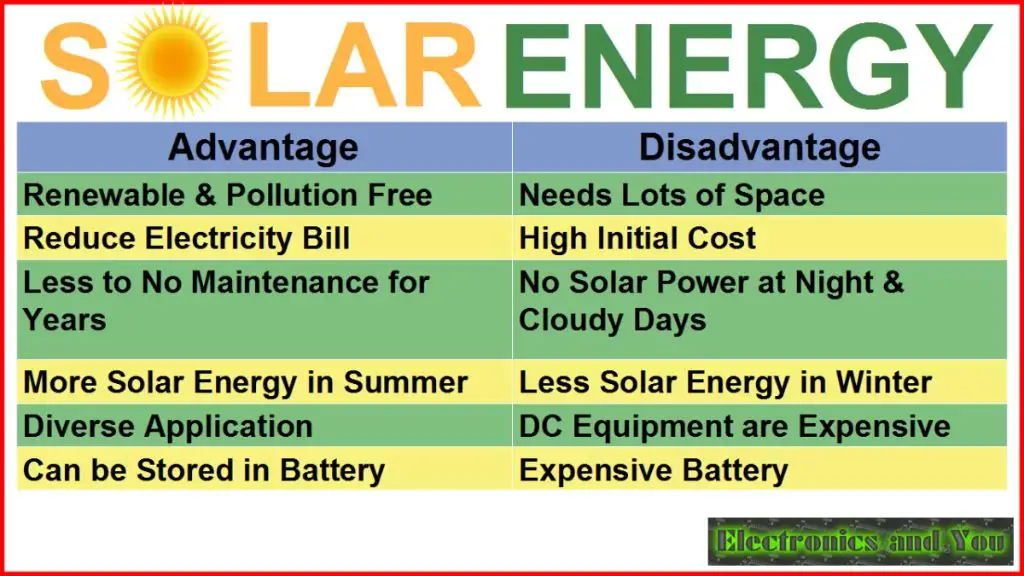
Solar energy is the conversion of energy from sunlight into electricity. It is considered a renewable energy source since the sun’s rays are essentially limitless. Solar energy has become increasingly popular in recent years as an alternative to fossil fuels. There are both advantages and disadvantages to using solar power. The main pros of solar energy are reduced electricity bills, energy independence, environmental benefits, and long-term cost savings. The primary cons are high upfront costs, dependence on sunny weather, space requirements, and challenges with energy storage. This article will provide an in-depth look at the key pros and cons to weigh when considering solar energy.
Low Operating Costs
One of the biggest advantages of solar power is its low operating costs compared to conventional energy sources like coal or natural gas. Unlike fossil fuels, the “fuel” for solar panels – sunlight – is completely free. So once the solar panels are installed, there are no ongoing fuel costs. According to an NREL report, solar energy systems have annual operation and maintenance costs of less than $15 per kilowatt or $15,000 per megawatt 1. This is significantly lower than the operating costs of fossil fuel plants.
Solar panels also require very little maintenance over their lifetime of 25-30 years. Other than occasionally cleaning off dust/debris and checking electrical connections, solar panels are very low maintenance. So while the upfront cost of installing solar can be high, the ongoing costs are minimal. This allows homeowners and businesses to lock in low electricity rates for decades.
Reduces Electricity Bills
Installing solar panels on your home or business can significantly reduce your electricity bills, often eliminating them entirely. Once the solar panels are installed, they can generate electricity from sunlight at no marginal cost. This allows solar customers to reduce the amount of electricity they need to purchase from the utility.
According to Earth.org, homeowners can reduce their energy bills by up to 62% with solar panels [1]. The exact savings will depend on factors like system size, electricity rates, and the amount of sun in the local climate, but many solar customers see dramatic bill reductions. For example, Sunrun states that with solar, the average homeowner may only have a monthly electric bill of $20-40 [2]. This represents a massive decrease from nonsolar homes.
Over a 20 year period, one analysis found that solar panels lowered the cumulative electricity bill by $20,876 [3]. The savings over such a long timeframe can really add up. Going solar provides a form of electricity price protection, since solar customers pay little to nothing per kWh for what the panels produce. As utility electricity rates inevitably rise over time, this stability becomes increasingly valuable.
Environmentally Friendly
Unlike fossil fuels like coal, natural gas, and oil, solar panels do not emit greenhouse gases or air pollution during operation. In fact, solar power plants produce no emissions of sulphur dioxide, nitrogen oxides, carbon monoxide, or particulates. Instead, they run on energy from the sun, which is a renewable source of energy.
Using solar energy avoids the release of harmful gases like nitrogen oxides, sulfur dioxide, and carbon dioxide into the atmosphere. According to the EPA, the annual emission offset from solar power in the U.S. is equivalent to taking over 6 million cars off the road. Solar energy systems actively contribute to reducing greenhouse gases and mitigating climate change.
In addition, solar power plants require less water for cooling compared to fossil fuel plants. Solar photovoltaic (PV) systems need little to no water, while concentrated solar power plants use 90% less water on average than a coal power plant.
Requires Lots of Space
Solar farms and large-scale solar installations require significant amounts of land. According to a 2013 study by the National Renewable Energy Laboratory, the average utility-scale solar installation requires around 7 acres per megawatt (MW) of electricity capacity [1]. This means a 100 MW solar farm would need around 700 acres of land. However, rooftop solar systems have minimal land requirements, only needing enough roof space to mount the panels.
The amount of land needed depends on the solar technology used. Photovoltaic (PV) solar panels can be installed with minimal spacing on rooftops and parking shade structures. But ground-mounted PV needs modest spacing between rows of panels to avoid shading, requiring around 5-10 acres per MW. Concentrated solar power (CSP) needs more substantial spacing for solar collectors, requiring about 10 acres per MW.
While solar does require significant land, the actual footprint taken up by solar equipment is far less, with the rest remaining open space. And solar development can co-locate on marginal lands unusable for other purposes like farming. Rooftop solar also takes advantage of existing roof space without consuming new land. Overall, solar’s land usage is modest compared to fossil fuels when accounting for mining, drilling, pipelines, and associated infrastructure.
Intermittent Power
One of the main disadvantages of solar energy is that it can only generate power when the sun is shining. Unlike fossil fuel power plants which can provide electricity 24/7, solar panels cannot produce any electricity at night or on cloudy days. This intermittent nature of solar poses challenges for relying on it as a baseload power source. According to Scientific American, solar only generates about 20-40% of its rated capacity due to intermittency, compared to 85-90% capacity factors for coal and gas plants.
Periods of cloudy weather can last for days or weeks, causing solar output to drop dramatically. This inconsistency in power generation makes balancing supply and demand on the electric grid more complex. More storage is needed to save excess solar electricity produced during sunny conditions for use at night or during inclement weather. Relying too heavily on intermittent sources like solar requires maintaining adequate backup from non-renewable power plants that can quickly scale up when solar falters.
High Upfront Cost
One of the main disadvantages of solar panels is that they require a high upfront investment. According to Forbes, the average cost for a residential solar panel system is around $3 per watt, or $15,000 – $25,000 for a typical 6-8 kW system.
This high initial cost is due to the solar panels themselves, as well as additional components like inverters, wiring, racks and mounts. Installation costs can also add several thousand dollars to the overall price tag.
Since most homeowners cannot afford to pay such a large amount outright, solar financing options have become popular. Loans, leases and power-purchase agreements allow homeowners to pay for their solar panel system over time while still enjoying lower electricity bills from the energy produced.
Despite the high upfront cost, most solar panel systems can pay for themselves within 4-8 years through electricity savings. Furthermore, tax credits, rebates and other incentives can reduce the initial investment by up to 50% in some cases, shortening the payback period.
Storage Challenges
One of the main challenges of solar energy is that it can only produce power when the sun is shining. This intermittent power generation causes problems for grid stability and makes solar impractical as a primary power source without some form of energy storage (DOE).
Batteries are the most common way to store solar energy, but they can be expensive. Other storage methods like pumped hydro and thermal storage are location-dependent. New technologies like compressed air storage and hydrogen electrolysis show promise but are still developing (SEIA).
The good news is that storage costs are dropping, and grid-scale batteries paired with solar farms are becoming more feasible. Homeowners can also install solar batteries to store excess energy for use when the sun isn’t shining. Ongoing storage technology improvements will help overcome the intermittent nature of solar power.
Aesthetic Impact
The aesthetic impact of solar panels, especially large solar farms, has been a concern in some communities. Some view solar panels as an eyesore, both for rooftop systems on homes and larger utility-scale projects (Sanchez-Pantoja, 2018). The reflective surfaces and industrial appearance of solar farms contrasts sharply with natural landscapes or agricultural fields. Rooftop solar panels can also be perceived as unattractive. Many feel that solar projects detract from the visual character of neighborhoods or rural areas.
However, perceptions of the visual impact vary greatly. Surveys have found that public acceptance of solar technology is generally high, despite some objections to the aesthetics (Sánchez-Pantoja, 2018). With careful site selection and screening, the visual intrusion of solar projects can be minimized. Community involvement and context-sensitive design can help mitigate concerns over aesthetics. The clean, high-tech look of solar panels may also be perceived positively as a symbol of energy innovation.
Conclusion
Solar energy presents both advantages and disadvantages. On the positive side, solar power has very low operating costs once installed, reduces electricity bills, is environmentally friendly, and energy from the sun will be available indefinitely. However, there are also downsides like solar requires lots of space for solar farms, provides intermittent power based on sunny weather, has a high upfront cost, and presents challenges for energy storage. Overall, solar power has significant potential benefits but still requires some key advancements in efficiency and storage technology to maximize its usefulness. Most projections expect solar to continue growing as a portion of the global energy mix, with estimates ranging from supplying 14-50% of total electricity by 2050 if current trends persist. With increased research and development, solar energy could realistically become a major pillar of the world’s renewable energy portfolio within the coming decades.

